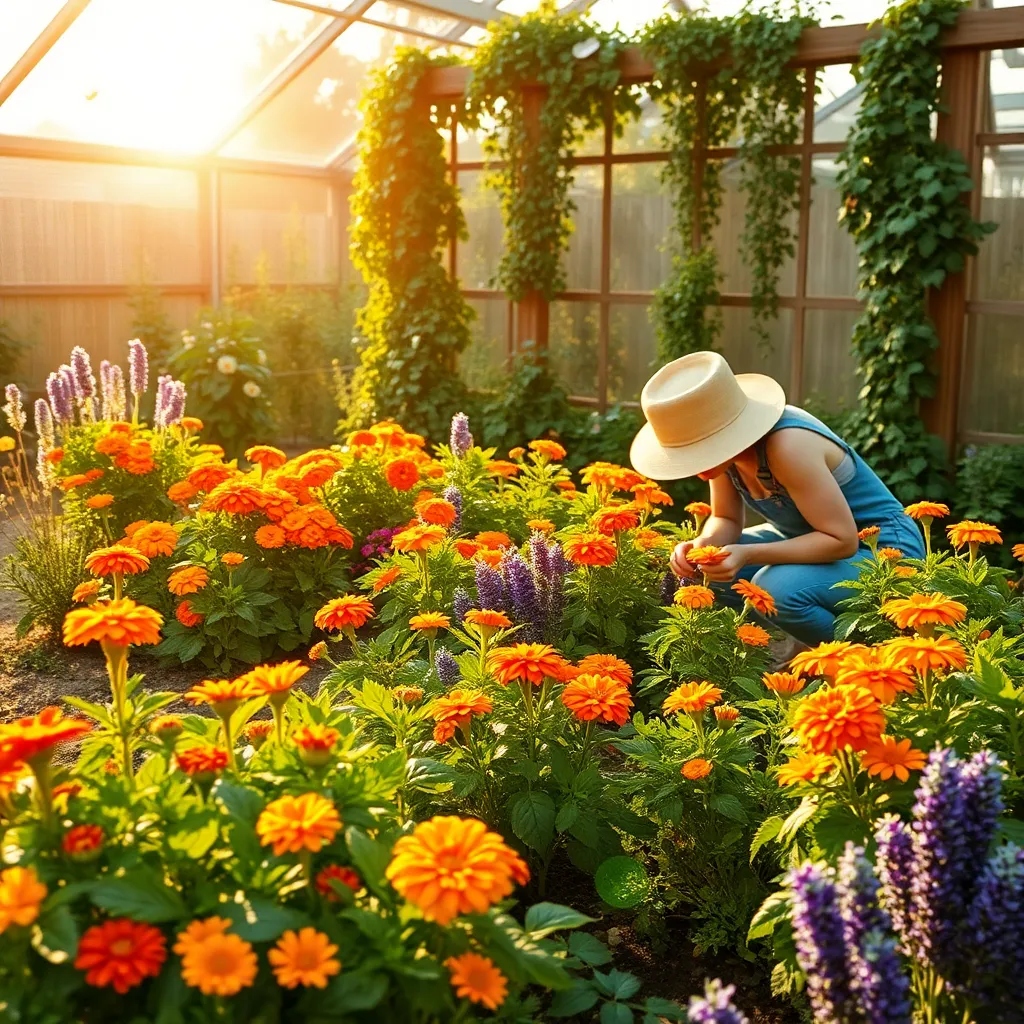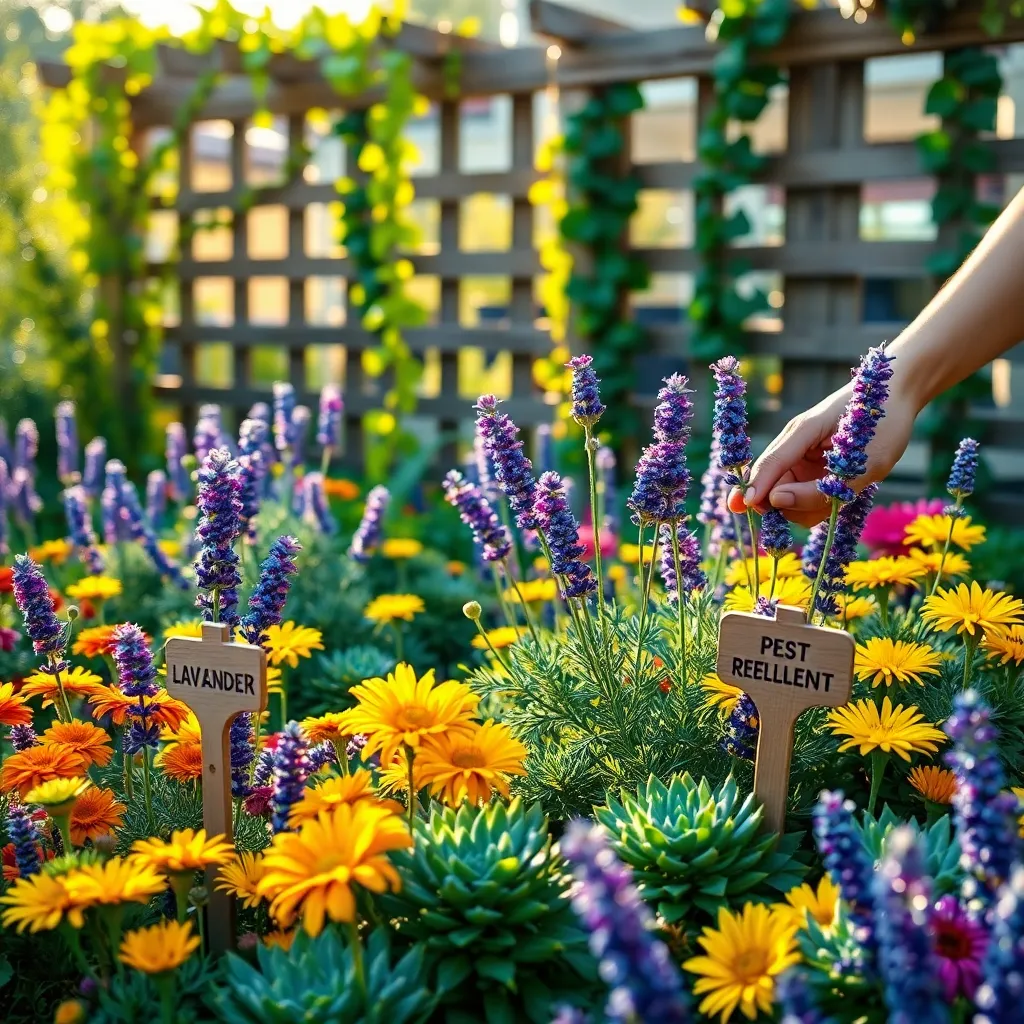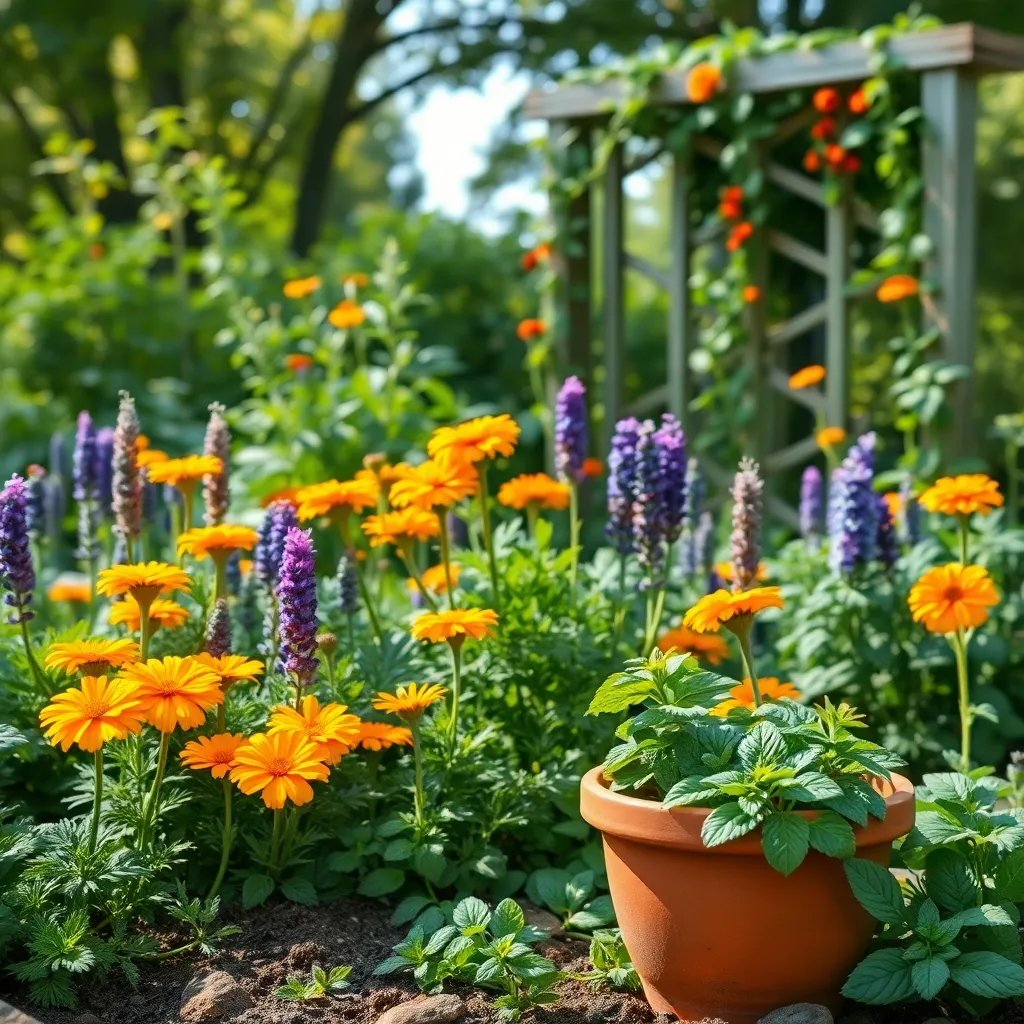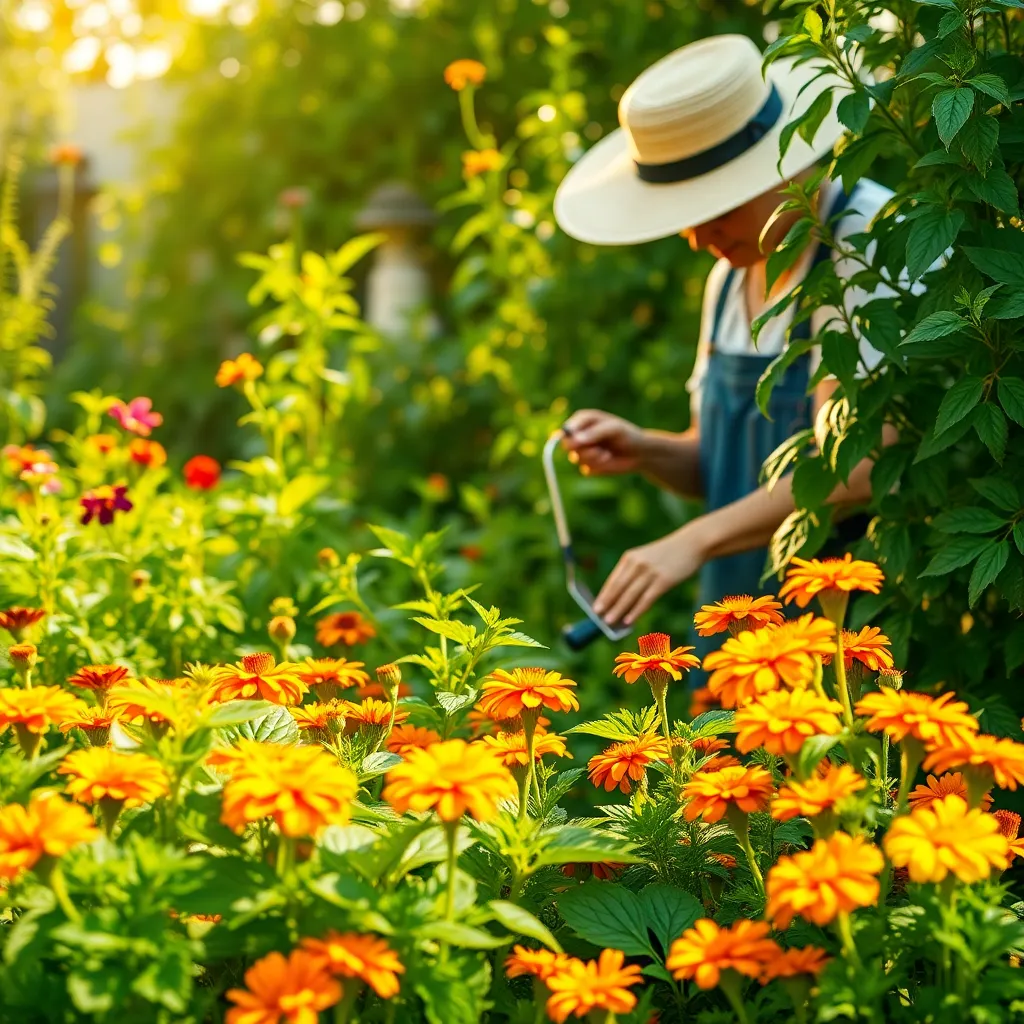Imagine stepping into your garden, a haven of tranquility where vibrant blooms and lush greenery thrive, undisturbed by pesky intruders. For both budding and seasoned gardeners, the dream of a pest-free garden is a shared aspiration, and the good news is that nature offers a delightful solution—pest repellent plants. By strategically selecting and nurturing certain plants, you can invite a natural balance that helps keep unwanted insects at bay, without resorting to harsh chemicals.
In this article, we’ll explore a variety of pest-repelling plants that are both beautiful and functional, transforming your garden into a self-sustaining ecosystem. From fragrant herbs like basil and rosemary to colorful flowers such as marigolds and nasturtiums, you’ll discover how these plants not only enhance your garden’s aesthetic appeal but also serve as natural defenders. Whether you’re just beginning your gardening journey or have years of experience, you’ll find practical tips and insights to help you cultivate a more harmonious garden environment.
Understanding Pest Repellent Plants

Plants that naturally repel pests can be a gardener’s best ally, as they reduce the need for chemical pesticides. By using these plants strategically, you can create a harmonious garden that not only thrives but also maintains a balanced ecosystem.
Many pest-repellent plants are aromatic herbs that can serve dual purposes in your garden. For example, lavender not only keeps mosquitoes at bay but also adds a delightful fragrance to your garden and can be used in various culinary dishes.
To get the best results, you should plant pest-repellent plants in strategic locations. Placing them around the perimeter of your garden or near particularly vulnerable plants can maximize their protective benefits and ensure your garden remains pest-free.
Growing conditions are crucial for these plants to thrive and effectively repel pests. Most pest-repellent herbs, like rosemary and mint, prefer well-drained soil and full sun, so make sure to amend your soil with compost if necessary to enhance drainage and fertility.
Watering needs can vary between different pest-repellent plants, so be sure to tailor your care routine accordingly. Lavender and rosemary, for example, are drought-tolerant and prefer less frequent watering, while mint thrives in slightly more moist conditions.
For those looking to take their pest-repelling efforts to the next level, consider companion planting. By interspersing pest-repellent plants such as marigolds throughout your vegetable garden, you can protect crops like tomatoes and cucumbers from nematodes and other harmful pests.
Top Herbs for Pest Control

Herbs are not just culinary delights; they can also serve as effective pest repellents. Basil, for instance, is known to repel flies and mosquitoes, making it a valuable addition to any garden space. To grow basil successfully, ensure it receives full sunlight and plant it in well-drained soil. Water regularly, but be cautious of overwatering as basil dislikes soggy conditions.
Another powerful herb in the gardener’s arsenal is rosemary, which deters cabbage moths, bean beetles, and carrot flies. Rosemary thrives in well-drained, sandy soil, and should be placed in a spot that gets plenty of sunlight. While rosemary is drought-tolerant once established, it benefits from regular watering during the growing season, especially in hot climates.
Mint is a vigorous grower that repels ants, aphids, and flea beetles. Plant mint in a container to keep its growth in check, as it can quickly become invasive. Ensure it receives partial shade and keep the soil consistently moist, but not waterlogged, to encourage healthy growth.
If you’re looking for a herb that adds beauty and pest control benefits, consider lavender. Lavender repels moths, fleas, and flies, and thrives in well-drained soil with plenty of sunlight. It requires minimal watering once established, making it an excellent choice for low-maintenance gardens. Regular pruning of lavender encourages bushier growth and more blooms.
Flower Varieties That Deter Bugs

Marigolds are a popular choice for gardeners looking to deter bugs naturally. These vibrant flowers produce a scent that repels mosquitoes and nematodes, making them a valuable addition to any garden. To thrive, marigolds require full sun and well-draining soil. Water them regularly, ensuring the soil stays moist but not waterlogged, which can help maintain their health and pest-repelling properties.
Nasturtiums are another excellent option for keeping pests at bay. Known for their ability to attract aphids away from other plants, they serve as a natural trap crop. These flowers prefer poor, well-drained soil and full sun exposure. Avoid over-fertilizing, as rich soil can lead to lush foliage at the expense of flowers, reducing their effectiveness in pest control.
Lavender is not only fragrant but also an effective bug deterrent. Its strong aroma is known to repel mosquitoes, fleas, and moths. Plant lavender in sandy, well-drained soil and a sunny location for optimal growth. Pruning the plants after blooming encourages bushier growth and more blooms, enhancing its pest-repelling qualities.
Chrysanthemums contain a natural insecticide known as pyrethrin, which can help deter a wide range of insects such as ants, ticks, and roaches. To grow chrysanthemums successfully, ensure they are planted in well-draining soil with access to full sunlight. Regular watering is essential, but avoid wetting the foliage to prevent fungal diseases. Deadheading spent blooms can promote more flowers and prolong their bloom period, maximizing their effectiveness in pest control.
Integrating Repellent Plants in Beds

Integrating repellent plants in your garden beds is a strategic way to naturally deter pests. By incorporating these plants, you can reduce the need for chemical pesticides and promote a healthier garden ecosystem.
Start by choosing a mix of repellent plants that are best suited for your climate and soil type. Marigolds, lavender, and basil are excellent choices for most regions and are known for their pest-deterring properties.
Consider planting marigolds alongside vegetables as they can help repel nematodes and other harmful insects. Ensure they receive full sun and well-drained soil for optimal growth and effectiveness.
Lavender not only repels pests like moths and fleas but also attracts beneficial pollinators. Plant it in a sunny location with sandy, well-drained soil, and water sparingly to prevent root rot.
Basil is another versatile plant that deters flies and mosquitoes while enhancing your cooking. Place basil in a spot with partial to full sun and keep the soil consistently moist but not waterlogged.
For advanced gardeners, consider experimenting with companion planting techniques. Pairing specific repellent plants with sensitive crops can enhance their protective effects and improve overall garden health.
Maintaining Your Pest-Free Garden

Maintaining a pest-free garden requires consistent attention and care. Regularly inspecting your plants for signs of pests is crucial, as early detection can prevent infestations from spreading.
Consider employing a combination of natural pest control methods alongside repellent plants. For instance, introducing beneficial insects like ladybugs or lacewings can help keep pest populations in check.
Healthy soil is the foundation of a strong garden, so ensure your soil is nutrient-rich and well-draining. Amend your soil with organic matter such as compost or well-rotted manure to improve its structure and fertility.
Watering your plants correctly also plays a vital role in pest prevention. Over-watering can lead to root rot and attract pests, so it’s best to water deeply but infrequently, allowing the soil to dry out slightly between watering sessions.
Incorporate a diverse range of plants to create a balanced ecosystem that naturally deters pests. A mix of flowers, herbs, and vegetables can enhance biodiversity and reduce the likelihood of pest issues.
Conclusion: Growing Success with These Plants
In exploring the harmonious blend of nature and relationships, we’ve delved into five key concepts to nurture both your garden and your bonds. First, the art of communication, akin to understanding plant needs, is vital for relationship growth. Second, setting boundaries, much like garden borders, protects and defines your space. Third, the importance of patience, as plants and relationships both require time to flourish. Fourth, the role of adaptability, where adjusting to change enhances resilience. Finally, the joy of shared goals, as tending to a garden together mirrors building a future.
To immediately implement these concepts, consider starting a small garden project with your partner—it’s a practical step that embodies teamwork and fosters connection. As you embark on this journey, bookmark this article for easy access to these nurturing principles that can be revisited whenever you seek guidance.
Looking ahead, know that with each seed planted, both in your garden and your relationship, you’re cultivating a future rich with growth and harmony. Embrace these insights and take heart in knowing that your efforts today pave the way for lasting success tomorrow. Here’s to flourishing relationships and gardens alike!

